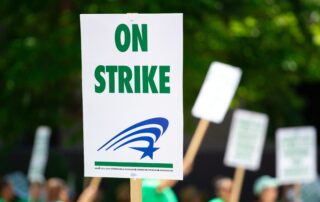Poverty and Opportunity
The equal participation of women in politics and government is integral to building strong communities and a vibrant democracy in which women and men can thrive. By voting, running for office, and engaging in civil society as leaders and activists, women shape laws, policies, and decision-making in ways that reflect their interests and needs, as well as those of their families and communities.
Today, women constitute a powerful force in the electorate and inform policymaking at all levels of government. Yet, women continue to be underrepresented in governments across the nation and face barriers that often make it difficult for them to exercise political power and assume leadership positions in the public sphere. This chapter presents data on several aspects of women’s involvement in the political process in the United States: voter registration and turnout, female state and federal elected and appointed representation, and state-based institutional resources for women. It examines how women fare on these indicators of women’s status, the progress women have made and where it has stalled, and how racial and ethnic disparities compound gender disparities in specific forms of political participation.

Details
Map Description, legend or descriptive text
Section Links
Political Participation Rank and Score by State
Women Earn Less Than Men Whether They Work in the Same or in Different Occupations
In 2022, women earned less than men for full-time weekly work in almost all occupations, including in 19 of the largest 20 occupations for women, and in all of the largest 20 occupations for men. Teaching Assistants (median weekly earnings of $662) is the [...]
The Facts Are Clear: Unions Help Women Close the Pay Gap
You wake up; brush your teeth; get dressed. Maybe you make breakfast and send your kids off to school. You get into a car, or a bus, or a train, and commute to work. You spend the day building, or writing, or creating, or filing, [...]
The Gender Pay Gap, 1985 to 2021—with Forecast for Achieving Pay Equity, by Race and Ethnicity
Download Quick Figure If progress continues at the same rate as it has since 1985, it will take until almost another 200 years – until 2210 – for Hispanic or Latina women to reach pay equity with White men, and for Black women [...]
Gender and Racial Wage Gaps Persist as the Economy Recovers
Download Fact Sheet Download Quick Figure As a sign of the uneven recovery in 2021, gender wage gaps narrowed while median earnings fell marginally. Research Highlights As the economy slowly recovered from the COVID-19 “She-cession” and women and men began [...]
Fixing the Child Care Staffing Shortage by Making Child Care Jobs “Good Jobs”
Download Report Child care is an essential support for parents’ full participation in the economy, education, and training, and for children’s growth and development into healthy and well-adjusted adults. Even before the COVID-19 pandemic’s onset, however, high-quality and affordable child care was [...]
IWPR Reproductive Rights Index: A State-by-State Analysis and Ranking
Download Report The Status of Women in the States Initiative at the Institute for Women’s Policy Research provides timely data and research on women’s progress and well-being in the United States on a number of important indicators: employment and earnings, political participation, [...]







